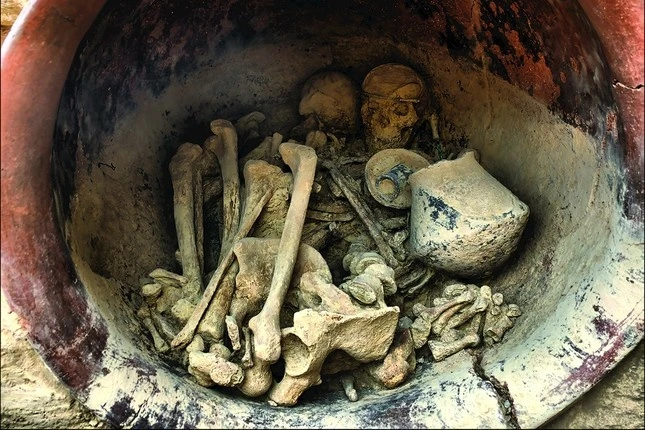In 2014, a significant archaeological discovery was made in ancient Spain, shedding light on the societal structure and the potential rule of women in El Argar society, which flourished around 3,700 years ago. Researchers unearthed two sets of remains, a male and a female, buried together, which provided fascinating insights into the roles and status of individuals in this ancient community.

The Discovery
The female remains were adorned with an array of exquisite silver jewelry, including rings, bracelets, and a crown. The presence of a crown is particularly noteworthy, as it is often associated with power and high status. The male remains, in contrast, were accompanied by gold earrings, rings, and a copper dagger. The disparity in the burial goods suggests a difference in their societal roles and statuses.
The Significance of the Jewelry
The silver jewelry found with the woman indicates her elite status within the El Argar society. Silver, being a precious metal, was likely reserved for the upper echelons of society, signifying wealth and power. The crown, in particular, is a potent symbol of authority and governance. Its presence on the woman’s remains suggests that she may have held a significant leadership position, potentially even ruling the community.

The Male Remains
The man’s burial goods, although valuable, were less elaborate compared to those of the woman. The gold earrings and rings signify that he too held a position of some importance, but the lack of a crown or other symbols of rulership indicates that his status was likely secondary to that of the woman. The copper dagger suggests he may have had a role as a warrior or protector.
Scholarly Interpretations
Scholars propose that the elaborate burial of the woman, especially with the crown, points to her being a member of the ruling class in El Argar society. This challenges the traditionally male-centric view of ancient leadership, suggesting that women could and did hold significant power and authority. The crown is a compelling piece of evidence for the hypothesis that women may have ruled or at least shared power in this ancient community.
Conclusion
The discovery of these remains and their accompanying artifacts provides a glimpse into the complex social structures of ancient El Argar society. The prominence of the woman’s burial goods, particularly the crown, supports the hypothesis that women could occupy high-status positions and possibly rule in ancient Spain. This finding not only enriches our understanding of El Argar society but also contributes to the broader discourse on the role of women in ancient civilizations.
The excavation of these 3,700-year-old remains continues to spark interest and debate among historians and archaeologists, offering a fascinating perspective on gender roles and leadership in ancient times.




